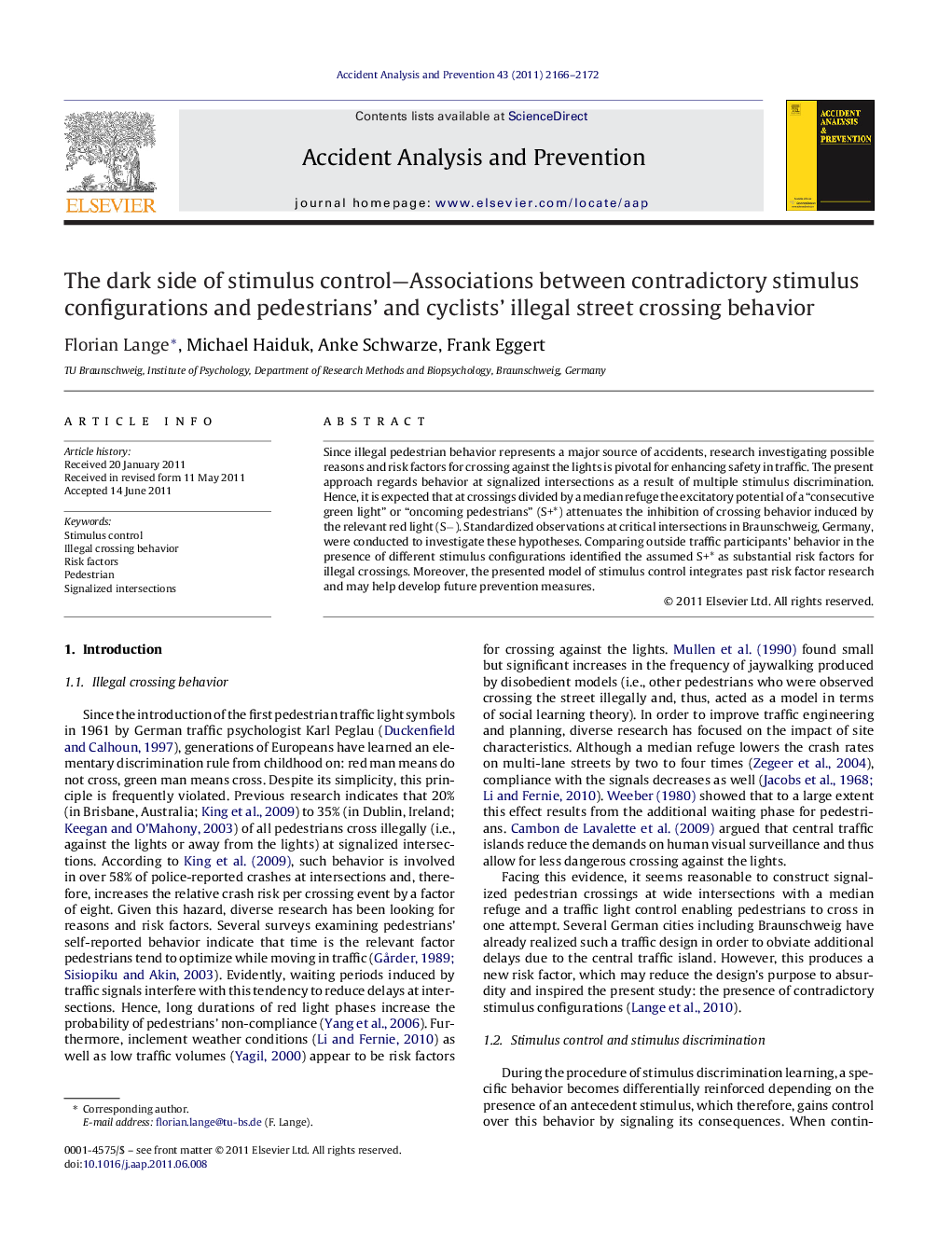| Article ID | Journal | Published Year | Pages | File Type |
|---|---|---|---|---|
| 572854 | Accident Analysis & Prevention | 2011 | 7 Pages |
Since illegal pedestrian behavior represents a major source of accidents, research investigating possible reasons and risk factors for crossing against the lights is pivotal for enhancing safety in traffic. The present approach regards behavior at signalized intersections as a result of multiple stimulus discrimination. Hence, it is expected that at crossings divided by a median refuge the excitatory potential of a “consecutive green light” or “oncoming pedestrians” (S+*) attenuates the inhibition of crossing behavior induced by the relevant red light (S−). Standardized observations at critical intersections in Braunschweig, Germany, were conducted to investigate these hypotheses. Comparing outside traffic participants’ behavior in the presence of different stimulus configurations identified the assumed S+* as substantial risk factors for illegal crossings. Moreover, the presented model of stimulus control integrates past risk factor research and may help develop future prevention measures.
► This study examines risk factors for illegal pedestrian crossing behavior. ► We analyze and observe pedestrian behavior at signalized intersections. ► We regard pedestrian crossing behavior as a result of discrimination learning. ► Contradictory discriminative stimuli increase the risk of crossing illegally. ► Modifying the stimulus configurations might help reducing illegal crossing behavior.
